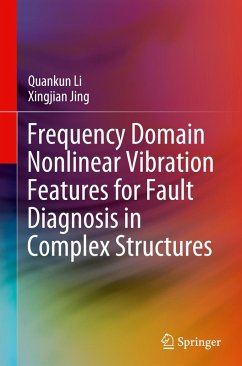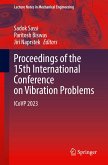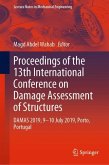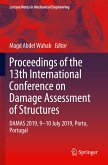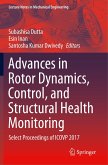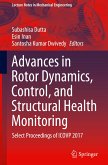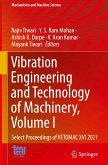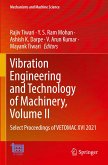This book provides a comprehensive introduction to recent advances in frequency domain nonlinear vibration features utilized for fault diagnosis in complex structures in the field of mechanical, civil, aeronautical and aerospace engineering. It illustrates their basic principles, advantages, drawbacks and applications in detail through theoretical analysis and simulation/experimental study.
This book focuses on frequency domain nonlinear vibration features and its main contents can be classified into two parts according to the introduced features. One is about features based on the SOOS (second-order output spectrum), and the other is about features based on the OS@DF (output spectrum at the double frequency or the second harmonic frequency). Complex structures in this book include satellites, aeroengines, bridges, pipelines, frames, etc., and corresponding multiple degree-of-freedom (MDOF) models include chain-type, beam-type, ring-like, grid-like, unit-like and rotating models.
Detailed theoretical analysis and case demonstration help undergraduates, graduates and researchers have a systematical learning process and understand basic dynamic characteristics of complex structures more thoroughly. Then, some models, methods and results in this book can be a valid reference for the design, optimization and iteration of next-generation complex structures. On the other hand, this book provides a totally new inspiration for fault diagnosis methods combined with artificial intelligence and machine learning algorithms since frequency domain nonlinear vibration features introduced in this book are more sensitive and effective to faults.
This book focuses on frequency domain nonlinear vibration features and its main contents can be classified into two parts according to the introduced features. One is about features based on the SOOS (second-order output spectrum), and the other is about features based on the OS@DF (output spectrum at the double frequency or the second harmonic frequency). Complex structures in this book include satellites, aeroengines, bridges, pipelines, frames, etc., and corresponding multiple degree-of-freedom (MDOF) models include chain-type, beam-type, ring-like, grid-like, unit-like and rotating models.
Detailed theoretical analysis and case demonstration help undergraduates, graduates and researchers have a systematical learning process and understand basic dynamic characteristics of complex structures more thoroughly. Then, some models, methods and results in this book can be a valid reference for the design, optimization and iteration of next-generation complex structures. On the other hand, this book provides a totally new inspiration for fault diagnosis methods combined with artificial intelligence and machine learning algorithms since frequency domain nonlinear vibration features introduced in this book are more sensitive and effective to faults.

